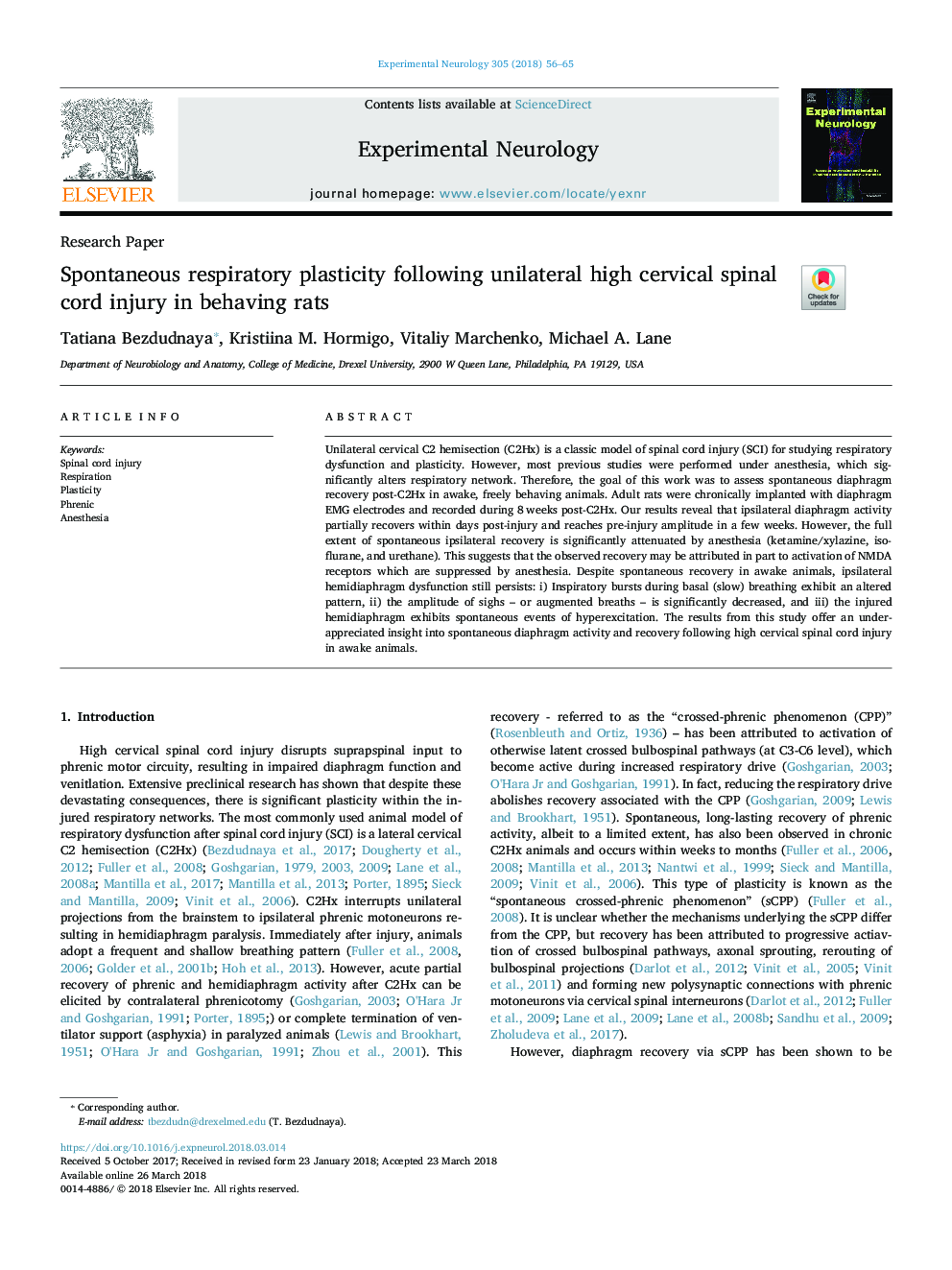| کد مقاله | کد نشریه | سال انتشار | مقاله انگلیسی | نسخه تمام متن |
|---|---|---|---|---|
| 8684616 | 1580132 | 2018 | 10 صفحه PDF | دانلود رایگان |
عنوان انگلیسی مقاله ISI
Spontaneous respiratory plasticity following unilateral high cervical spinal cord injury in behaving rats
ترجمه فارسی عنوان
پلاستیسیته تنفسی خود به خود پس از آسیب ناحیه گردن رحم یک طرفه در موش های صحرایی رفتار می کند
دانلود مقاله + سفارش ترجمه
دانلود مقاله ISI انگلیسی
رایگان برای ایرانیان
کلمات کلیدی
موضوعات مرتبط
علوم زیستی و بیوفناوری
علم عصب شناسی
عصب شناسی
چکیده انگلیسی
Unilateral cervical C2 hemisection (C2Hx) is a classic model of spinal cord injury (SCI) for studying respiratory dysfunction and plasticity. However, most previous studies were performed under anesthesia, which significantly alters respiratory network. Therefore, the goal of this work was to assess spontaneous diaphragm recovery post-C2Hx in awake, freely behaving animals. Adult rats were chronically implanted with diaphragm EMG electrodes and recorded during 8â¯weeks post-C2Hx. Our results reveal that ipsilateral diaphragm activity partially recovers within days post-injury and reaches pre-injury amplitude in a few weeks. However, the full extent of spontaneous ipsilateral recovery is significantly attenuated by anesthesia (ketamine/xylazine, isoflurane, and urethane). This suggests that the observed recovery may be attributed in part to activation of NMDA receptors which are suppressed by anesthesia. Despite spontaneous recovery in awake animals, ipsilateral hemidiaphragm dysfunction still persists: i) Inspiratory bursts during basal (slow) breathing exhibit an altered pattern, ii) the amplitude of sighs - or augmented breaths - is significantly decreased, and iii) the injured hemidiaphragm exhibits spontaneous events of hyperexcitation. The results from this study offer an under-appreciated insight into spontaneous diaphragm activity and recovery following high cervical spinal cord injury in awake animals.
ناشر
Database: Elsevier - ScienceDirect (ساینس دایرکت)
Journal: Experimental Neurology - Volume 305, July 2018, Pages 56-65
Journal: Experimental Neurology - Volume 305, July 2018, Pages 56-65
نویسندگان
Tatiana Bezdudnaya, Kristiina M. Hormigo, Vitaliy Marchenko, Michael A. Lane,
